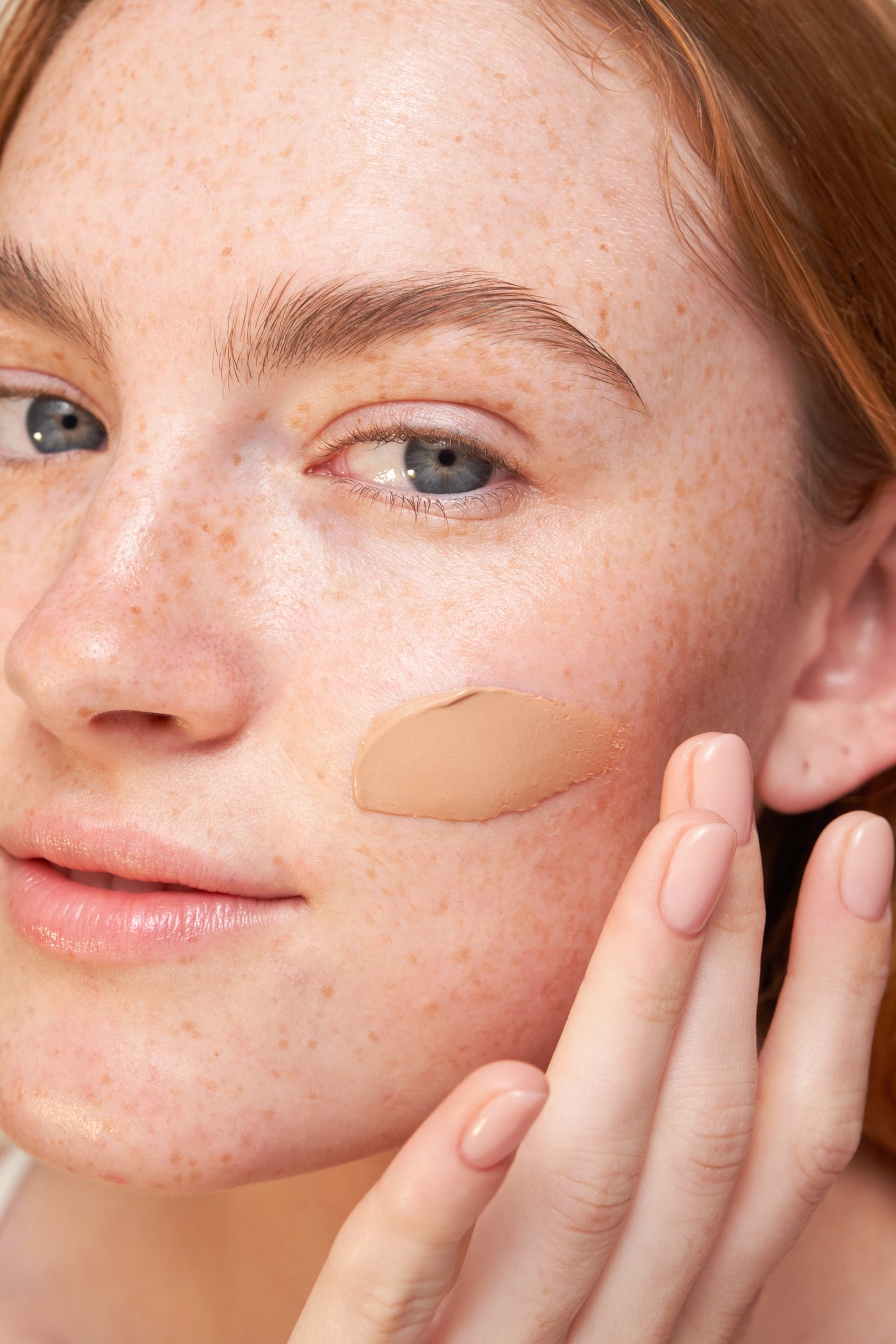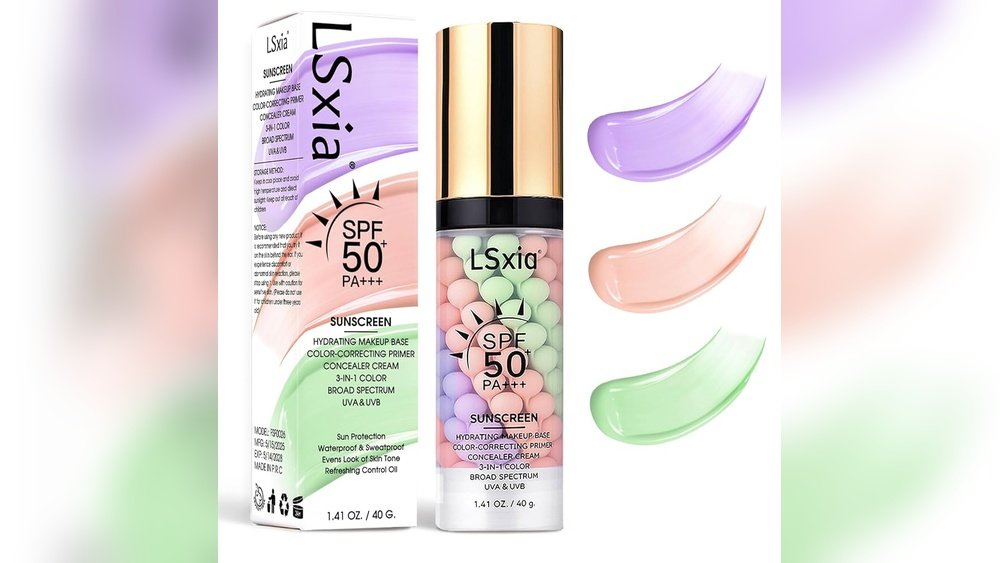Are you confused about whether to apply primer or sunscreen first when getting ready? You’re not alone.
The order you apply these products can make a big difference in how your makeup looks and how well your skin is protected. Imagine spending time perfecting your makeup, only to realize your sunscreen wasn’t applied properly—leaving your skin vulnerable to sun damage.
Or worse, your primer messing with your sunscreen’s effectiveness. You’ll discover the simple, effective order to apply your makeup base, primer, and sunscreen. By the end, you’ll know exactly how to protect your skin while creating the perfect canvas for your makeup. Keep reading, because the secret to flawless, healthy skin starts with the right routine.
Sunscreen Before Primer
Applying sunscreen before primer is crucial for both skin health and makeup performance. Sunscreen acts as a shield against harmful UV rays. Primer helps makeup last longer and creates a smooth surface. Knowing why sunscreen comes first can improve your daily routine and protect your skin better.
Why Sunscreen Comes First
Sunscreen must be the last step in your skincare routine before makeup. It forms a protective layer on your skin. Applying primer first can block sunscreen from fully absorbing. This reduces the sunscreen’s ability to protect against UV damage. Let the sunscreen absorb for a few minutes before applying primer. This ensures your skin stays safe and makeup adheres well.
How Sunscreen Protects Your Skin
Sunscreen guards your skin from UVA and UVB rays. These rays cause sunburn, premature aging, and skin cancer. Sunscreen blocks or absorbs these harmful rays. It helps maintain healthy skin and prevents dark spots. Using sunscreen daily, even indoors, is important. It keeps your skin safe while you enjoy a flawless makeup look.
Primer’s Role In Makeup
Primer plays a key role in makeup. It prepares your skin for foundation and other products. A good primer helps makeup last longer and look smoother. It creates a base that holds makeup in place throughout the day. Without primer, makeup may fade or settle into fine lines.
Creating A Smooth Canvas
Primer fills in pores and fine lines. It smooths the skin’s surface for easy makeup application. This even base helps foundation glide on without patchiness. Primers control oil and shine, keeping skin matte. They also add hydration for dry skin types. A smooth canvas means makeup looks fresh and flawless.
Types Of Primers And Benefits
There are many primer types, each with unique benefits. Silicone-based primers create a silky, smooth finish. They blur imperfections and keep makeup intact. Hydrating primers add moisture and glow to dry skin. Mattifying primers reduce shine and control oil for oily skin. Color-correcting primers help with redness or dullness. Choosing the right primer improves your makeup’s look and wear.
Correct Layering Sequence
Applying makeup base products in the right order protects your skin and improves makeup wear. Sunscreen forms a shield against harmful UV rays. Primer smooths skin and helps makeup last longer. Layering sunscreen before primer keeps your skin safe and your makeup flawless.
Skipping or reversing this order can reduce sunscreen’s effectiveness. It may also cause makeup to slide off or look uneven. Follow the correct layering steps for best results every day.
Step-by-step Application
Start with a clean, moisturized face. Apply sunscreen evenly across your skin. Use enough to cover all exposed areas. Wait a few minutes for sunscreen to absorb fully. Next, apply a thin layer of primer. Focus on areas where makeup tends to fade or crease. Let the primer set before adding foundation or other makeup.
Timing Between Layers
Give sunscreen time to settle for about 3 to 5 minutes. This wait allows it to form a protective barrier. Applying primer too soon can disturb this layer. After primer, wait 1 to 2 minutes before starting makeup. This short pause helps makeup stick better and last longer. Proper timing keeps your skin protected and makeup looking fresh.

Credit: www.amazon.com
Choosing The Right Products
Choosing the right products for your makeup base is key for a flawless look and healthy skin. Primer and sunscreen serve different purposes but both protect your skin and help your makeup last longer. Knowing which product to use first and what features to look for can improve your makeup routine and skin care.
Oil-free And Non-comedogenic Options
Many people have oily or sensitive skin that can break out easily. Oil-free primers and sunscreens help prevent extra shine and clogged pores. Non-comedogenic formulas reduce the chance of acne and irritation. These options create a smooth base without adding heaviness or greasiness. Choose products labeled as oil-free and non-comedogenic to keep your skin clear and balanced.
Spf Considerations In Makeup
Sun protection is essential every day to prevent skin damage. Sunscreens with at least SPF 30 offer reliable defense against harmful UV rays. Some makeup primers now include SPF, but they usually do not replace dedicated sunscreen products. Use a broad-spectrum sunscreen first, then apply primer and makeup. Layering ensures full protection while maintaining a smooth surface for your makeup.
Maintaining Protection Throughout Day
Maintaining skin protection throughout the day is crucial when using makeup base products. Sunscreen shields your skin from harmful UV rays. Primer helps makeup last longer and smooths your skin. Combining both ensures your skin stays safe and your makeup looks fresh. But, protection can fade as hours pass. It is important to keep reapplying sunscreen for full coverage.
Reapplying Sunscreen Over Makeup
Reapplying sunscreen during the day can be tricky with makeup on. Use a gentle touch to avoid ruining your look. Dab sunscreen carefully on exposed areas like cheeks and nose. Use a sunscreen stick or a powder form for easy application. These options blend well without smudging makeup. Reapplication keeps your skin guarded from sun damage all day long.
Using Spf Setting Sprays
SPF setting sprays offer a simple way to refresh sun protection. Spray lightly over your finished makeup for added SPF coverage. These sprays help control shine and keep makeup in place. They absorb quickly and do not feel heavy on your skin. Using an SPF setting spray is a quick step to maintain protection without reapplying cream sunscreen.

Credit: imageskincare.co.uk
Common Mistakes To Avoid
Knowing the right order to apply primer and sunscreen matters a lot. Mistakes in this step can reduce sunscreen’s protection and ruin makeup. Avoiding common errors keeps your skin safe and makeup flawless.
Applying Primer Before Sunscreen
Many apply primer before sunscreen by mistake. This blocks sunscreen from reaching the skin properly. Sunscreen needs direct contact to protect against UV rays. Apply sunscreen first, wait a few minutes to absorb, then apply primer. This order keeps your skin safe and makeup smooth.
Using Too Much Product
Applying too much primer or sunscreen can feel heavy and cause makeup to slide off. Use a thin, even layer of sunscreen for full protection. Follow with a light layer of primer to create a smooth base. Too much product clogs pores and makes skin oily. Less is more for a fresh, natural look.

Credit: www.youtube.com
Frequently Asked Questions
Do I Put Primer Before Or After Sunscreen?
Apply sunscreen first as the final skincare step. Let it absorb, then apply primer to create a smooth makeup base.
What Order Do You Put Sunscreen On With Makeup?
Apply sunscreen after moisturizer and before makeup. Let it absorb fully. Then apply primer and foundation gently to avoid disrupting sunscreen.
Does Layering Primer & Sunscreen Cause Pilling?
Layering primer over sunscreen can cause pilling if products don’t absorb well or have incompatible formulas. Apply sunscreen first, let it fully absorb, then gently apply primer to minimize pilling. Choose lightweight, compatible products and use minimal product to avoid texture issues.
What Is The Main Difference Between Primer And Sunscreen?
Primer smooths skin and helps makeup last longer, while sunscreen protects skin from UV damage.
Should Sunscreen Be Applied Before Or After Primer?
Apply sunscreen first to protect skin, then use primer to create a smooth makeup base.
Can Primer Replace Sunscreen In A Makeup Routine?
No, primer does not provide sun protection; sunscreen is necessary to prevent skin damage.
Conclusion
Choosing the right order matters for healthy skin and flawless makeup. Apply sunscreen before primer to protect your skin properly. Let sunscreen absorb well before adding primer to smooth your face. This routine helps your makeup last longer and keeps skin safe.
Remember, sunscreen shields your skin from sun damage every day. A good primer creates a nice base for your makeup to stick. Follow these simple steps for a fresh, natural look all day. Your skin will thank you for the care and protection.
 Skip to content
Skip to content 